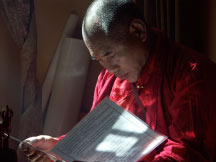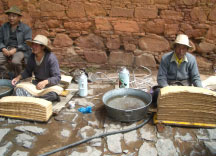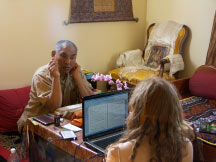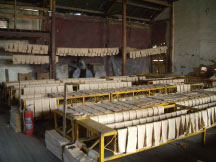
“One thing we must recognize is that what we are doing here, translating these ancient yet timeless Tibetan Buddhist scriptures and treatises into western languages, and maintaining the unbroken golden lineage through study, reflection, meditation, and ritual arts—this is no different from the great enlightened deeds accomplished during the golden era in Tibet, where the Dharma King Trisong Deutsen, the Great Master Padmasambhava, and the Abbot Shantarakshita gathered in the land of snows to bring the heritage and tradition of Buddhism from India to Tibet…” (full quote)
—Lama Chödak Gyatso Nubpa
The vast diversity of Tibetan literature is one of the most profound and untapped resources of ancient wisdom and creativity, and we are doing our part to translate, preserve and make available key bodies of this written knowledge.
Pema Drawa, Ari Bhöd’s retreat land, is the home of Ari Bhöd’s translation efforts. Under the guidance of Lama Chödak Gyatso, we have translated into English and German hundreds of texts and prayers. Many of these have been published and made available to the public, including “P’howa of the Long-Chen Nying-Thig” and “A Short Collection of Essential Prayers and Practices of the Great Secret Early Translation-Nyingma School”. Many additional texts are in various stages of translation and production.
Tibetan literature is as equally valuable to our global, cultural understanding as the great works of art and literature that have emerged from other ancient civilizations. The Tibetan language is filled with profound layers of meaning and connotation, and like all aspects of Tibetan culture, is invariably linked to a living lineage—an unbroken chain of living masters, whose knowledge comes from a long line of oral transmission dating back to the ninth century.
Tibetan literature still breathes with life, for living masters of the tradition remain to this day to explain and contextualize these great works. And yet, with the fragile state of Tibetan culture in general, this literary canon is highly endangered:
Less than two percent of the collection of Tibetan literature has ever been translated into Western languages.
Tibetan masters of the language and tradition, who still hold the lineage of the traditional schools of Tibetan Buddhist thought, are mostly in their seventies, eighties, and nineties.
The Tibetan diaspora and the bond of their civilization are becoming diluted by the systematic dismantling of the Tibetan culture within the country as well as the influence of the newer cultural traditions. Fewer Tibetan youth have an ability or interest in studying their language and its heritage.







